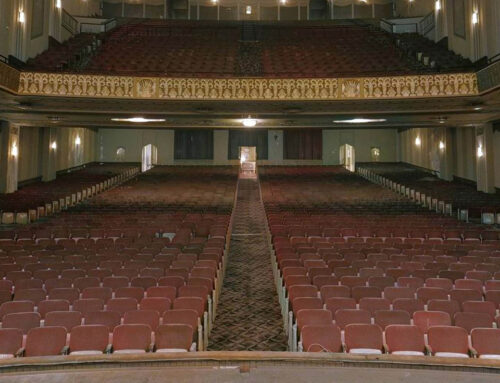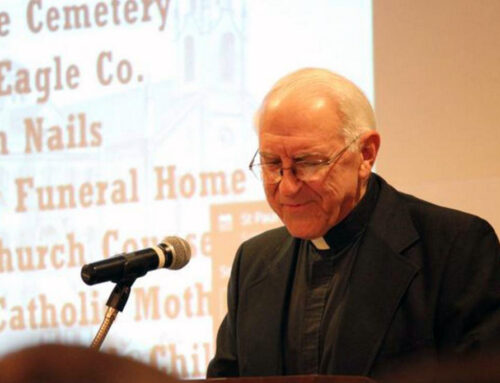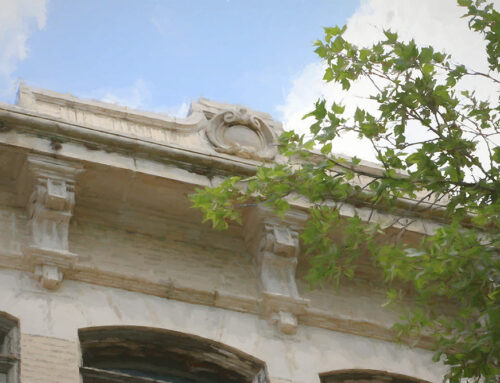In 1815 two Reading businessmen, Charles Kessler and John Spade, erected a substantial stone factory at the lower approach to the Rosenthal or Rose Valley glen which stretches between present day Egelman’s Park and Pendora Park. The glen is formed by the depression of neighboring mountains. Kessler and Spade had built their pioneer textile mill in an effort to encourage local production of cotton goods. After three years of operation the place closed down. The stone structure was modified and converted to a hotel.
Around this time a spring was discovered upon the property commonly referred to as Kessler’s Spring. The stone structure was eventually named the Mineral Spring Hotel.
The original spring rose from under a rock which dipped south, with its outcropping running east and west. From thence it flowed through an iron pipe to a hexagon enclosure, (near the hotel) in the center of which was a small square of brick work, capped with an iron plate, forming a hole of 3 feet by 2 feet, into which water gently dropped from a diminutive figure of a lion’s head. The origin of the original spring was never sought after and over time other springs outcropping on the eastern slope of Mount Penn in Rose Valley mixed with it. These springs were piped and water was obtained by holding a glass under the flowing stream issuing from the end of the pipe. It was believed that water from a spring on the property was rich in healthful and curative minerals, and the hotel became one of the first in the county to offer mineral water cures.
From 1827 to 1837 Mrs. Catherine Kessler and her two daughters managed the hotel. The Mineral Spring Hotel was converted into a “fashionable hotel” in 1837, and ran until 1856, when the Reading Water Company purchased the property.
Below: Mineral Spring Hotel, 1890.

From 1937 to 2017 the former Mineral Spring Hotel was long leased to the East End Athletic Club and has been vacant since the club was evicted under former Mayor Wally Scott’s administration in 2017. Even before 2017, it was astonishing that the building had an occupancy permit because of numerous plumbing issues. There were also concerns about the overall structural integrity of the building.
On March 4, 2023, firefighters were called to a blaze at the city landmark a little before 4:30 a.m. Flames tore through a vacant historic building. It took about an hour to extinguish the flames. Because of the extent of the damage caused by the fire a significant portion of the structure collapsed. The roof and about a third of the second floor of the original structure crumbled. Councilwoman Marcia Goodman-Hinnershitz said it is unlikely the building will be restored. It would need extensive repairs if someone desires to save it.

Below: Aftermath of Fire, 2023.


Rose Valley was a delightful spot for a summer resort of the inhabitants of Reading. In 1875 the Penn Street Passenger Railway was extended from Perkiomen Avenue to the Mineral Springs. A ten feet wide walkway from the grove opposite Aulenbach’s Cemetery extended through the woods along Rose Valley to the Mineral Springs. The walk was one of the coolest and most romantic in this vicinity. It led along a well shaded hillside, the trees being principally chestnut of about twenty-five years’ growth, standing close together, and furnishing ample protection from the rays of the sun. At the foot of the sloping hill was the main Mineral Spring dam, from which a portion of the city water supply was taken.
Below: Rose Valley Creek in Mineral Spring Park, 1890.

The mineral spring, with an estimated daily minimum flow of 120,000 gallons, was once one of the main sources of Reading water. However, the city has not used the area as a water source since about 1880. The mineral spring no longer flows, and has been abandoned.
In stages, an underground storm-sewer system was created that carries Rose Valley Creek. Rose Valley Creek is confined by a stone bed and walls laid by stone masons in Mineral Spring Park, which eventually empties into a storm sewer at 18th and Forest streets. In earlier times the waters of Rose Valley Creek were dammed at several places for commercial and industrial purposes.





